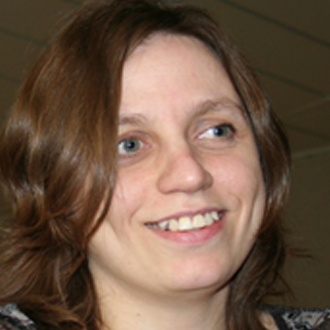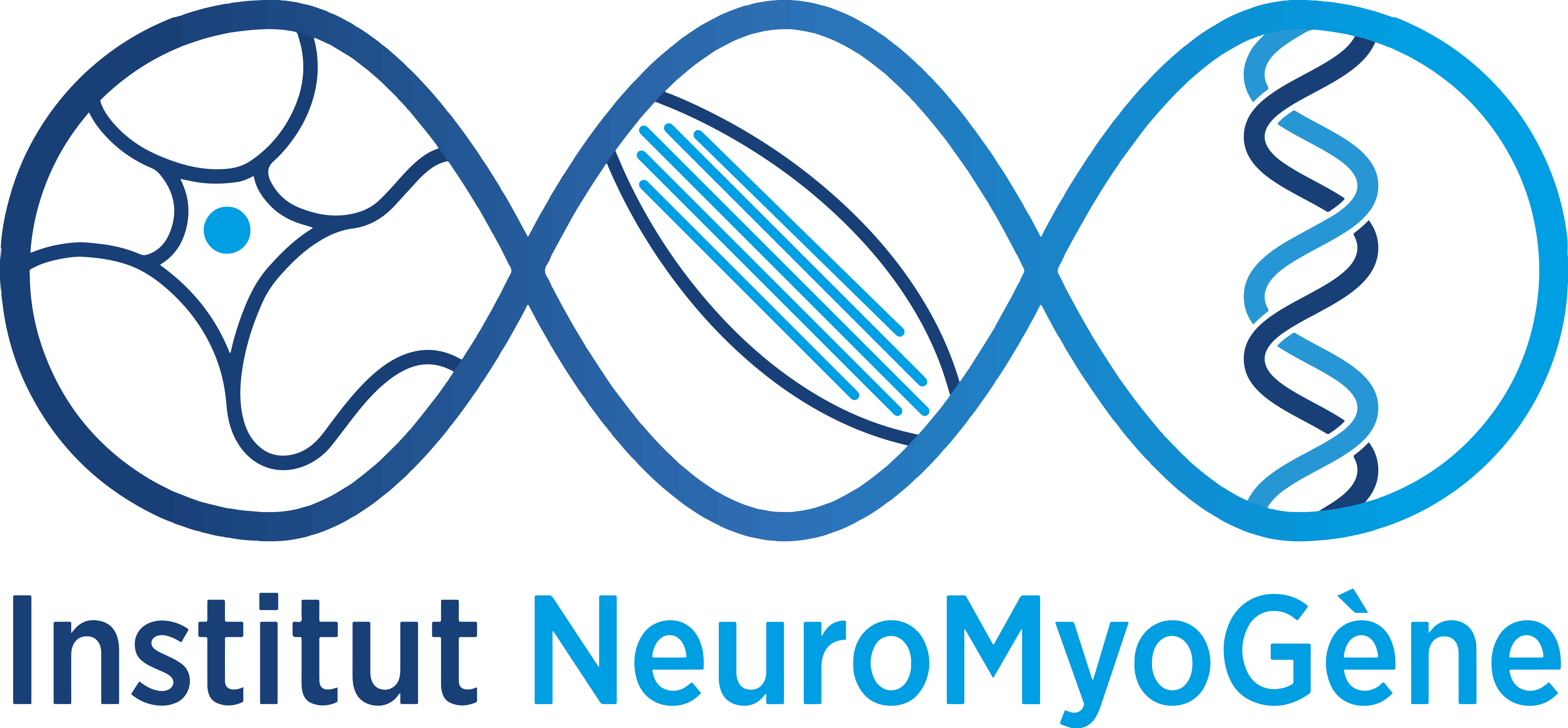Cells are the units of organic life and store in their nuclei what constitutes the instruction manual for proper cellular functioning, the DNA molecule. Despite the protection offered by the cellular environment, the integrity of DNA is continuously challenged by a variety of endogenous and exogenous agents (e.g. ultraviolet light, cigarette smoke, environmental pollution, oxidative damage, etc …) that cause DNA lesions, interfering with proper cellular functions, such as transcription, inducing premature cellular death and finally premature ageing and organs dysfunctions. Fortunately, cells have developed counteracting strategies that will repair DNA lesions, preserving the genetic information and the proper cellular functions.
Our team is particularly interested in understanding how DNA repair functions in vivo, in neurons and muscles, and how the transcriptional function is properly restored.

L’ÉQUIPE
- Ambra GIGLIA-MARI
DR CNRS, HDR - Pierre-Olivier MARI
CR CNRS - Lise-Marie DONNIO
POST-DOCTORANTE - Charlène MAGNANI
TECHNICIENNE UCBL - Jean-Luc THOMAS
INGENIEUR DE RECHERCHE CNRS - Jianbo HUANG
DOCTORANT - Zehui ZHAO
DOCTORANTE - Phoebe RASSINOUX
DOCTORANTE
ANCIENS MEMBRES
- Shaqraa MUSAWI
DOCTORANTE

PROJECTS
DNA REPAIR AND TRANSCRIPTION IN LIVING ORGANISMS
In order to allow the analysis of DNA repair and Transcription in living tissues, we have generated two new model systems, a knock-in mouse model (Xpby/y) expressing a fluorescently tagged TFIIH subunit (XPB) to study NER and Transcription and a knock-in mouse model (Fen1y/y) expressing a fluorescently tagged Fen-1 (Flap-endonuclease-1) to study BER and Replication. Both fluorescent proteins are fully functional and both models are bona fide source of knowledge on the spatio-temporal properties of DNA repair in vivo.Thanks to these new model systems, we have pushed live cell analysis and molecular microscopy to an unprecedented level of sophistication, realizing Fluorescence Recovery after Photobleaching (FRAP) analysis, for the very first time, in living mammalian tissues.Our goals for this project are
- Study the structure of the chromatin in different post-mitotic cells
- Measure the DNA repair performance in somatic cells in their natural microenvironment.
- Reconstitute in vitro the chromatin environment found in post-mitotic cells.
TRANSCRIPTION RESUMPTION AFTER DNA REPAIR
When DNA lesions are located on a transcribed gene, transcription is blocked at the damaged site and stalled RNAP2 will recruit DNA repair proteins to restore the genetic information via the pathway known as Transcription Coupled Repair (TCR). Repair proteins will excise the damaged DNA and the replication machinery will resynthesize the gap left by the reaction. Once the replication process is completed, transcription is expected to restart to restore proper cellular functions. Despite this important role for maintaining cellular functionality, the mechanism of RNAP2 restart after DNA repair has been poorly studied.Our goals for this project are
- Determine which RNAP2 post-translational modifications are strictly required for restart.
- Investigate whether kinases are implicated in RNAP2 restart.
DNA REPAIR OF RIBOSOMAL DNA
Ribosome biogenesis is the most energetically costly activity of cells, particularly of high-metabolism cells, such as neurons. More than 60% of cellular transcription results from RNAP1. RNAP1 transcription, the first and rate-limiting step of ribosome biogenesis, is specifically dedicated to produce the ribosomal RNAs (rRNA) from the ribosomal DNA (rDNA) located in the nucleolus.
Within DNA Repair, uncharted territories still remain to be explored; repair of rDNA is one of these territories. The need of acquiring knowledge on this field is more and more evident in view of the importance of ribosome biogenesis for cells like neurons and myocytes, which require a high amount of protein production and hence a high amount of ribosomes. More specifically, neurological problems in CS and TTD patients can be due to problems in ribosome biogenesis. We have recently demonstrated that rDNAs are repaired by the TCR machinery and that during this repair reaction, the RNAP1 is displaced at the border of the nucleolus.Our goals for this project are
- Determine which known repair proteins contribute to the repair of the rDNA.
- Discover new repair proteins that contribute to the repair of the rDNA.
- Map in space and time the repositioning of the RNAP1 during DNA repair.
- Investigate which proteins control the displacement of the RNAP1.
SELECTED PUBLICATIONS
Nucleolar Reorganizaton after cellular stress is orchestrated by SMN shuttling between nuclear compartments
Musawi S, Donnio LM, Magnani C, Binda O, Côté J, Lomonte P, Mari PO, Giglia-Mari G.
Nature Communication. Under revision
BioRXiv doi:10.1101/2022.11.04.515196
XAB2 Dynamics during DNA Damage-Dependent Transcription Inhibition
Donnio LM, Cerutti E, Magnani C, Neuillet D, Mari PO, Giglia-Mari G.
Elife. 2022 Jul 26;11:e77094.
doi: 10.7554/eLife.77094.
PMID: 3588086
A stable XPG protein is required for proper ribosome biogenesis: Insights on the phenotype of combinate Xeroderma Pigmentosum/Cockayne Syndrome patients.
Taupelet F, Donnio LM, Magnani C, Mari PO, Giglia-Mari G.
PLoS One. 2022 Jul 8;17(7):e0271246.
doi: 10.1371/journal.pone.0271246.
PMID:35802638
Actin and Nuclear Myosin I are responsible for nucleolar reorganization during DNA Repair
Cerutti E , Daniel L, Donnio LM, Neuillet D, Magnani C, Mari PO, Giglia-Mari G.
doi: https://doi.org/10.1101/646471
Cell-type specific concentration regulation of the basal transcription factor TFIIH in XPBy/y mice model.
Donnio LM, Miquel C, Vermeulen W, Giglia-Mari G, Mari PO.
Cancer Cell International. 2019 Sep 10;19:237.
doi: 10.1186/s12935-019-0945-4.
PMID : 31516394
CSB-Dependent Cyclin-Dependent Kinase 9 Degradation and RNA Polymerase II Phosphorylation during Transcription-Coupled Repair.
Donnio LM, Lagarou A, Sueur G, Mari PO, Giglia-Mari G.
Molecular and Cellular Bioliolgy. 2019 Mar 1;39(6). pii: e00225-18.
doi: 10.1128/MCB.00225-18.
PMID: 30602496
Mechanistic insights in transcription-coupled nucleotide excision repair of ribosomal DNA.
Daniel L, Cerutti E, Donnio LM, Nonnekens J, Carrat C, Zahova S, Mari PO, Giglia-Mari G.
Proceedings of the National Academy of Sciences U S A. 2018 Jul 17;115(29):E6770-E6779.
doi:10.1073/pnas.1716581115.
PMID: 29967171
FUNDING
- AFM Myoneuralp (2022-2027)
- INCA (2019-2023)
- Ligue contre le Cancer (2020-2022)



Address
Institut NeuroMyoGene (INMG) – Laboratoire Physiopathologie et Génétique du Neurone et du Muscle (PGNM)
UCBL – CNRS UMR 5261 – INSERM U1315
Faculté de Médecine et de Pharmacie
3ème étage
8 avenue Rockefeller
69008 LYON

